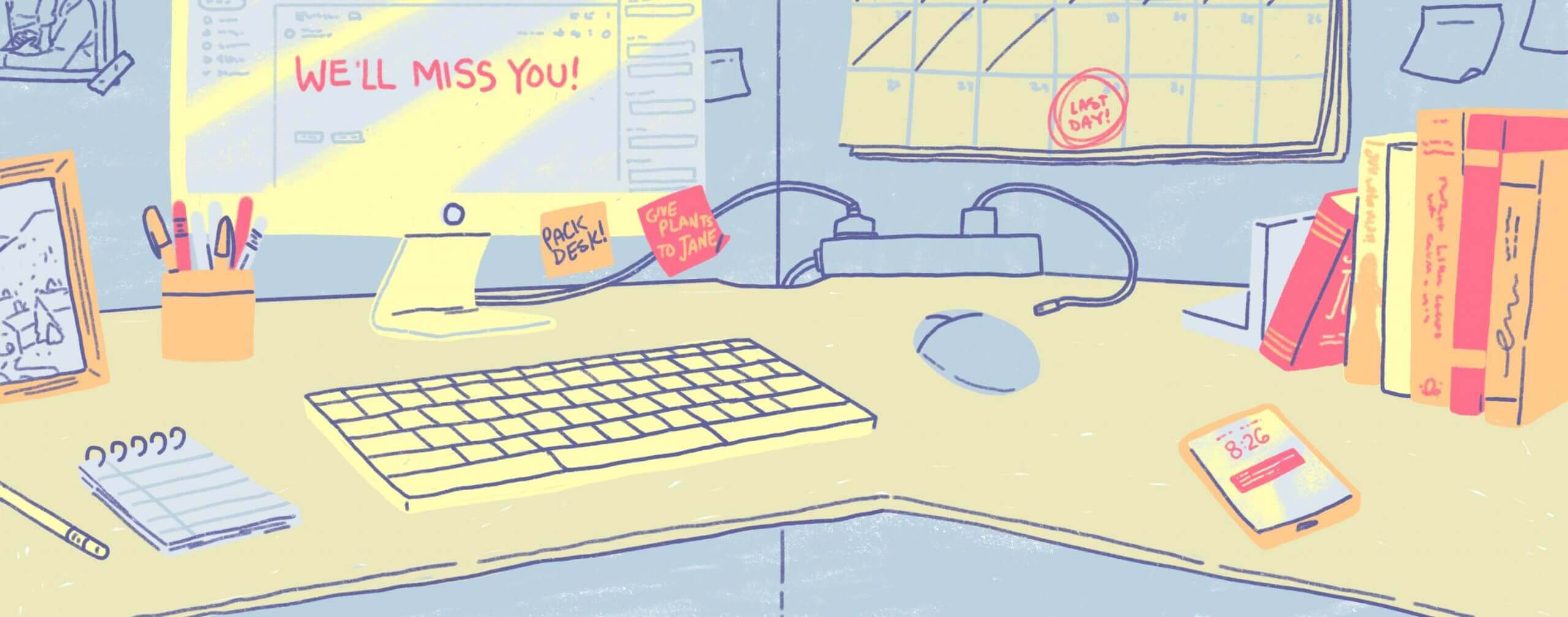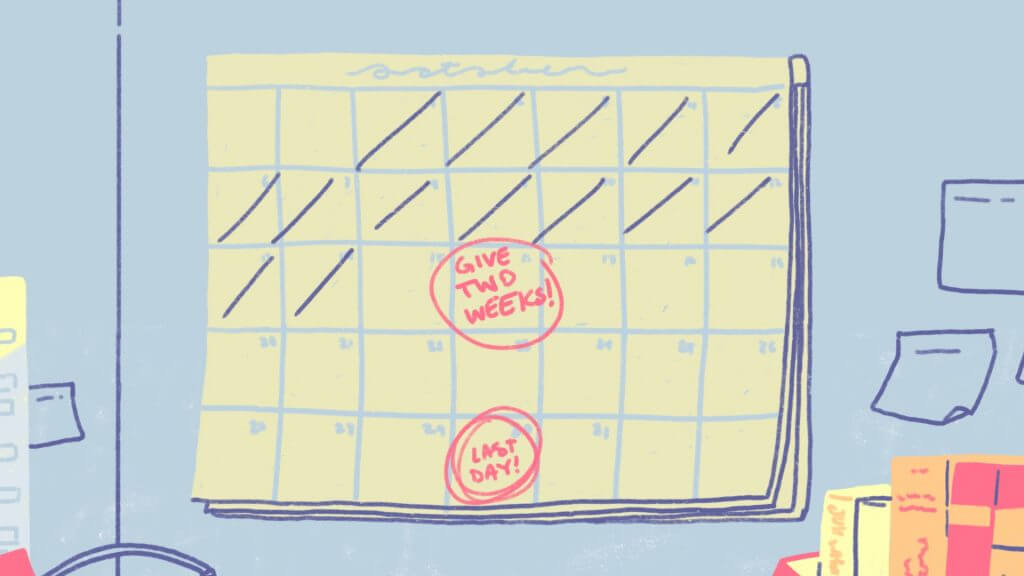
To-Dos for Leaving a Job
October 1, 2021Whatever your reasons for leaving a job, there are things you need to consider as you transition out of your current position.
Health insurance, retirement savings, perks, and other benefits all change when you leave a job, and that’s on top of a change in income. Taking the time to plan ahead and manage these changes pays huge dividends as you navigate through this transition.
Before You Go
If you’re able, make sure to archive any non-proprietary materials before you leave. These materials may be necessary if you start a new job or change career paths ! This includes work emails, performance reviews, web browser bookmarks, documents, projects, professional development materials, etc. Make sure they are non-proprietary.
Archiving your work documents, especially if you’ve been there for a while, can take time. Make sure all electronic resources are available for the person taking your place. Dropbox and email forwarding/Google Drive can be great tools in archiving and preparing your digital files.
Don’t forget to change your passwords and log-in information, as necessary.
Income
If you haven’t already, make monthly budget that’s adapted to your change in income. This is especially important if you will be out of work for a while or will be making less than you make now. If you need to live off savings for a while, you’ll probably need to adapt your personally spending habits. Creating a detailed budget can also help you see how long you can sustain living without or reduced income.
Health Insurance
If your employer offers health insurance, chances are you’ll lose it when you leave your job. The Consolidated Omnibus Budget Reconciliation Act (or COBRA) allows former employees to obtain continued health insurance coverage at group rates. Whie COBRA coverage typically costs less than an individual health insurance plan, it usually costs more than what you were previously paying through your employer.
Not everyone qualifies for COBRA, and in the case that you lose your insurance and do not qualify, you can go to the Health Insurance Marketplace to find a health plan that works for you.

Retirement
If your employer provided a 401(k), you may be able to leave it in the account even after you leave. This usually only happens if you have over $5,000 in the account. Sometimes if the total in your 401(k) is less than $1,000, your former employer may issue you a check. If the total in your 401(k) is between $1,000 and $5,000, you’ll need to roll over the money into an IRA—you can do this if the total is over $5,000 as well.
Update your resume and your LinkedIn profile. It’s easier to do these things when details are fresh. Don’t be afraid to keep a “master resume” will all relevant details and projects—with numbers, if you can! That way you can edit your shorter resume and tailor it to future jobs as needed without losing any information.
Check ex-employee benefits by scheduling an appointment with your HR department. Ask about information such as compensation for unused vacation time, continuing health coverage, managing any retirement accounts, and other benefits (including severance pay, if applicable). If you’ve been laid off, be sure to check on unemployment benefits.
Keep It Positive
Though leaving a job is challenging, leaving you with lots of financial and personal impact, remember to keep it positive, polite, and professional. Even if you hated your job, it doesn’t do any good to say so. Your attitude and professionalism in the last few weeks or days of your job will be remembered as future references call for information about you. Remember to say thank you to everyone who has helped you be productive and grow in your role at your organization, and maintain a positive and humble attitude moving forward.
This article has been republished with permission. View the original article: To-Dos for Leaving a Job.
